
Fai, Rising Rebellion is one of Uprising’s hottest new heroes; and while he may seem like a straightforward aggro deck, there is plenty to consider when putting a deck together. Most importantly, we'll be talking about developing a game plan. Before we even start choosing our cards, we need to decide upon a game plan. Having your strategy in mind can inform your card choices and narrow the large field of options.
Personally, I love decks like Fai in Flesh and Blood because of how proactive they can be. There’s nothing better than completely disrespecting your opponent’s game plan in favor of advancing our own. And yet, while Fai generally plays as an aggro deck, there are actually quite a few nuances to putting a list together. These nuances change the feel, the tempo, and the ideal lines of play.
Gameplan: Aggro Synergy
By LSS’s definition, Fai is an aggro synergy deck. The key operating word is definitely aggro, and our game plan is to play on the front foot, threatening wave after wave of attacks until we eventually overwhelm and kill our opponent. A typical Aggro Synergy Fai plays as many attacks with go again as possible, swings Searing Emberblade to extend chains, and uses Phoenix Flames to help threaten Mask of Momentum triggers to draw additional cards.
Fai needs cards with organic synergy (I've written on the differences between organic and inorganic synergy before) that can work well together and play effectively in a long combat chain, and may also consider cards with Inorganic Synergy that benefit from interactions with specific other cards or card types.
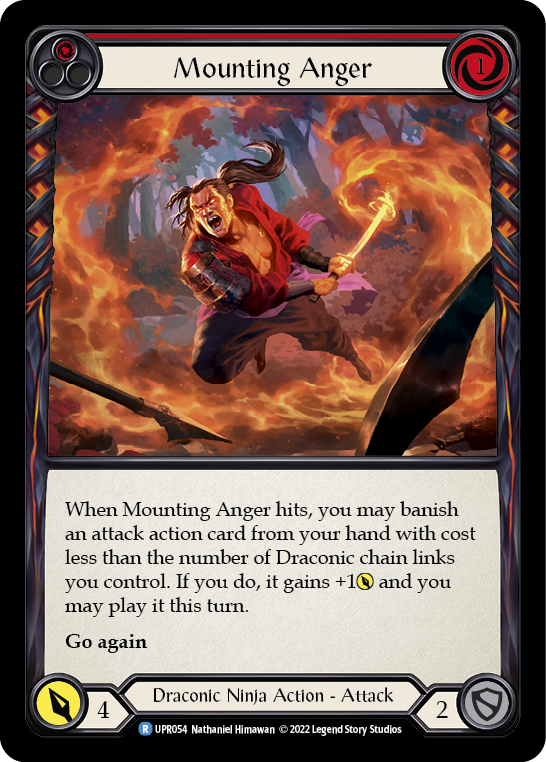
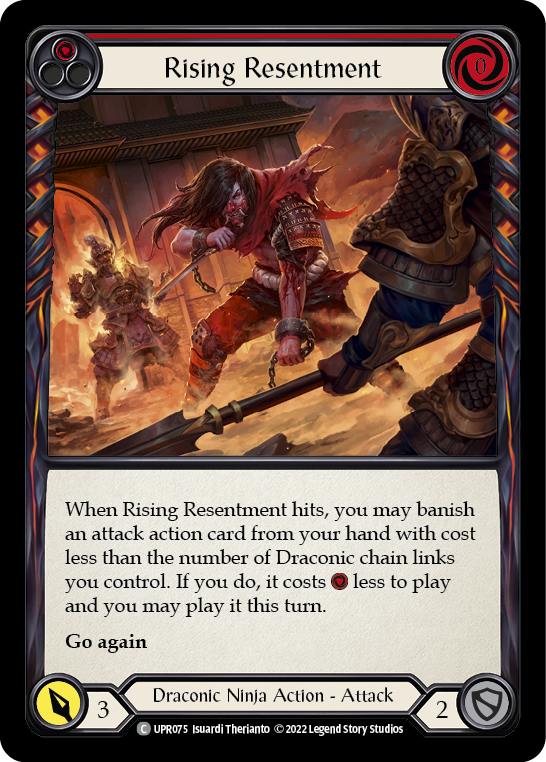
Some of our premium attacks (like Rising Resentment and Mounting Anger) offer additional value over their generic Ninja counterparts (Head Jab and Leg Tap) on hit. These attacks also work as excellent ‘openers’, enabling Fai’s other attacks such as Blaze Headlong and Lava Vein Loyalty- attacks which only have conditional go again that are critical for allowing us to reach a critical mass of relevant attacks. This is where the synergy really starts to kick in!
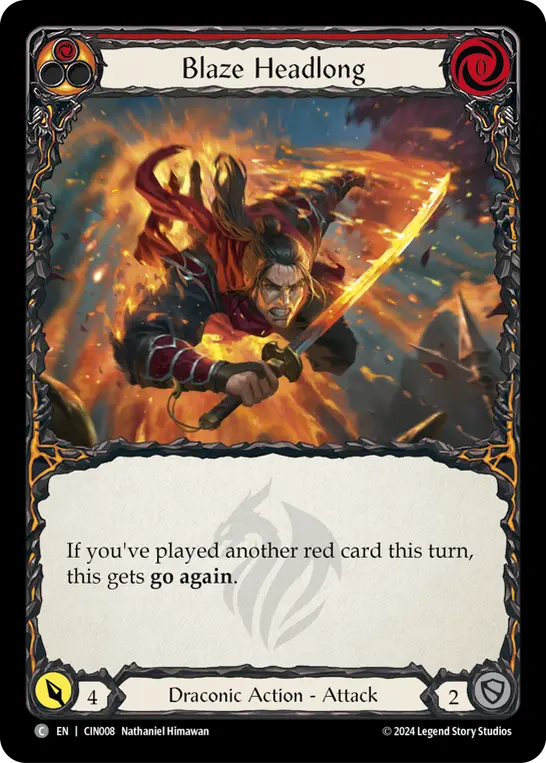
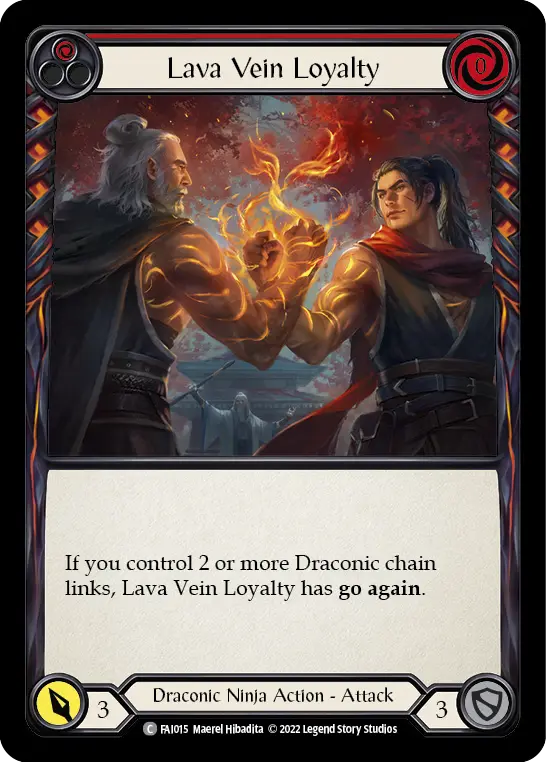
Spreading Flames, Art of War, and Uprising can be great cards for this strategy because they provide a buff to every attack you play in a long combat chain.
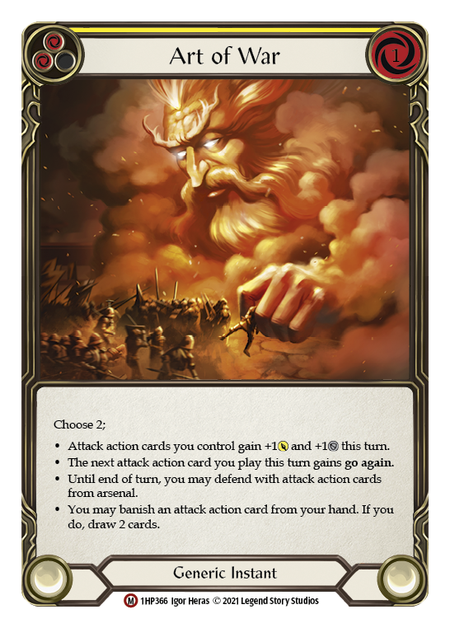
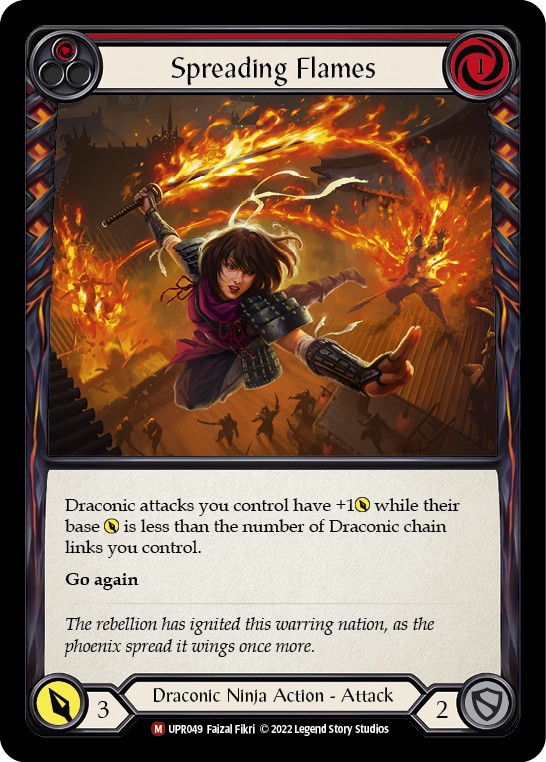
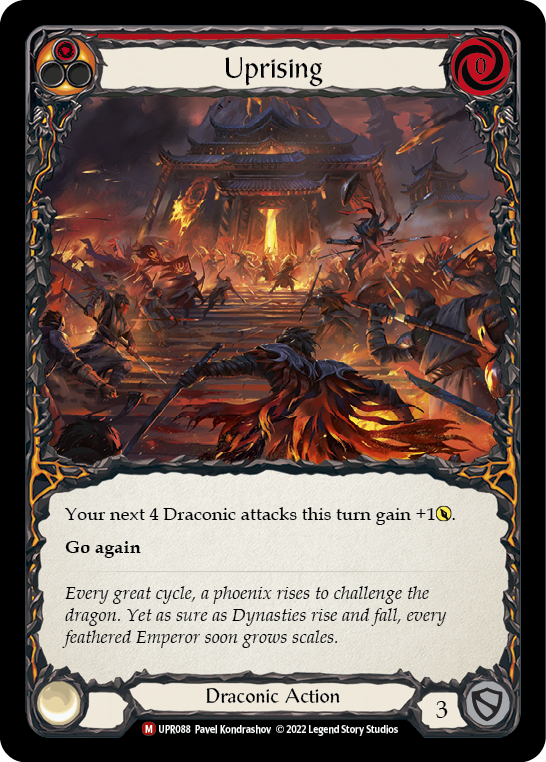
The popular Belittle package also features in some iterations of Aggro Synergy Fai, primarily as a means to feed the resource costs of turns with a higher resource cost. Notably, Belittle does not enable Draconic chain link strategies, but does enable rupture or help trigger Mask of Momentum.
Finally, the Aggro Synergy deck can play a number of relevant closers to take advantage of the long combat chains it produces. Some of the best rupture attacks for this strategy are Lava Burst and Breaking Point, while Snatch offers good value at the end of a combat chain of any length.
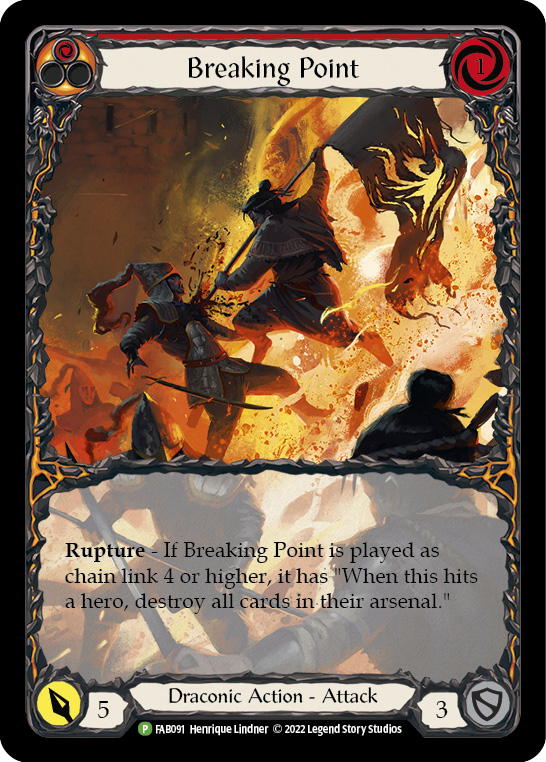
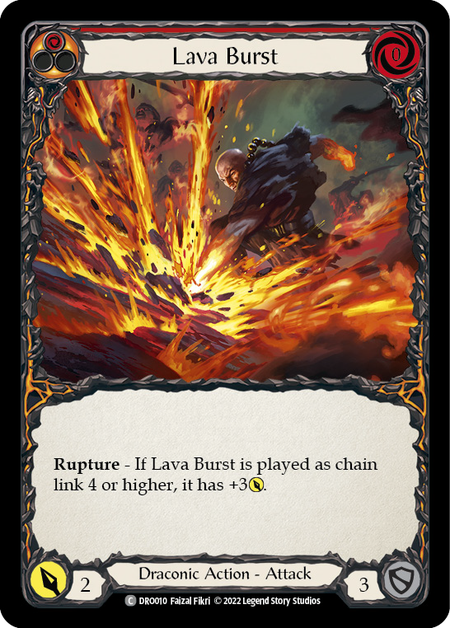

These cards work in tandem toward an excellent foundational game plan of attacking the opponent with multiple chain links every turn, while taking advantage of Mask of Momentum triggers or card-efficient turns to arsenal for powerful 5-card "hands".
Subtype: Draconic Synergy
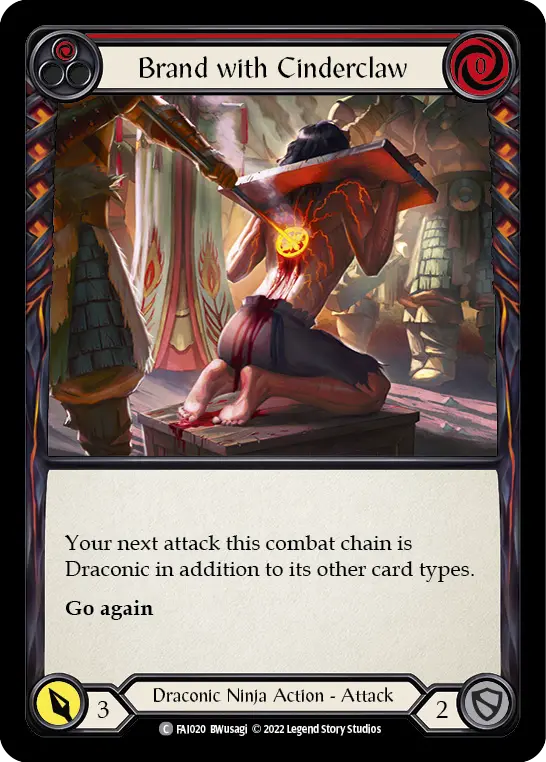
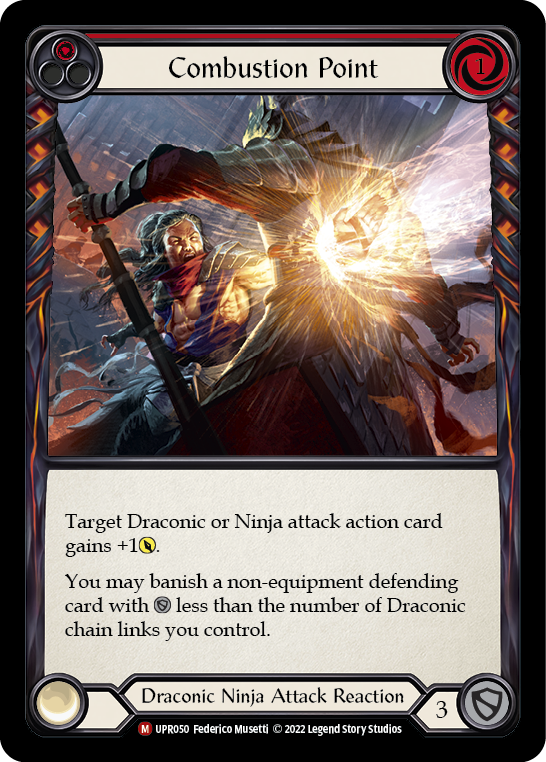
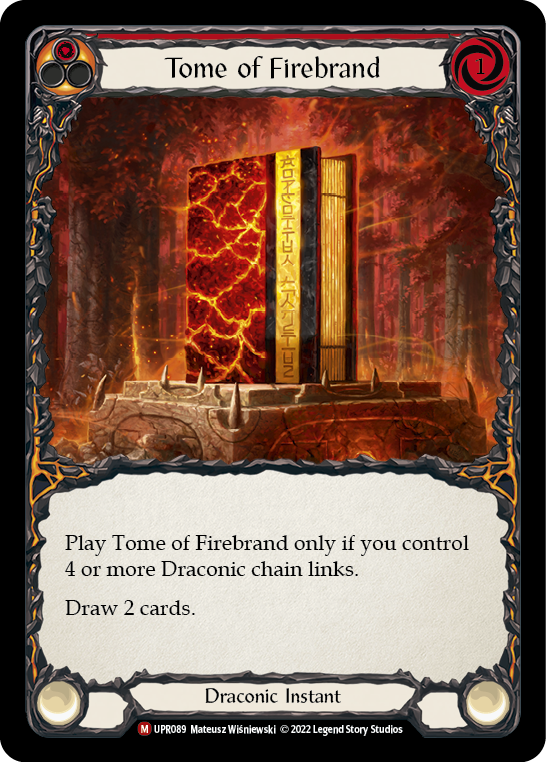
One subtype to the Aggro Synergy Fai list aims to play almost exclusively Draconic attacks. It prioritizes enabling effects that require many Draconic chain links. To include some of the most powerful exceptions, we use Brand with Cinderclaw’s effect of giving the next attack Draconic. In this build, Tome of Firebrand features prominently; it can draw 2 additional attacks to add onto an already punishing turn. Combustion Point can also be a powerful attack reaction in a deck that often plays fairly face up.
Subtype: Kodachi Rupture
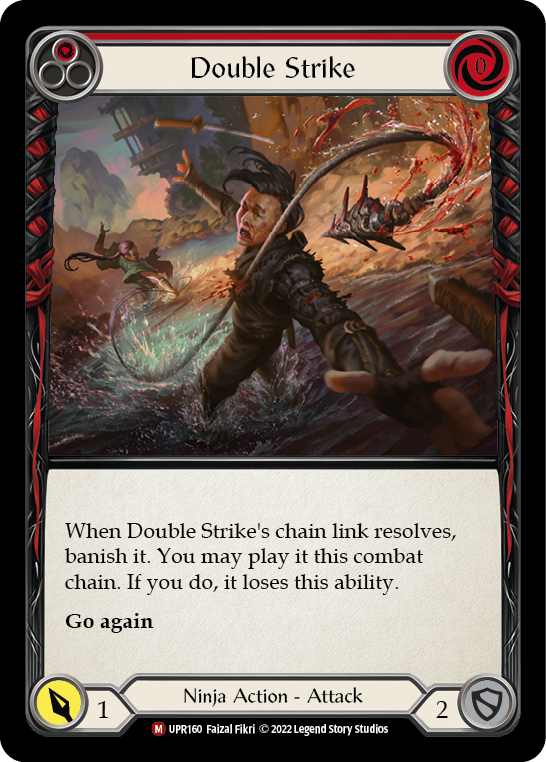

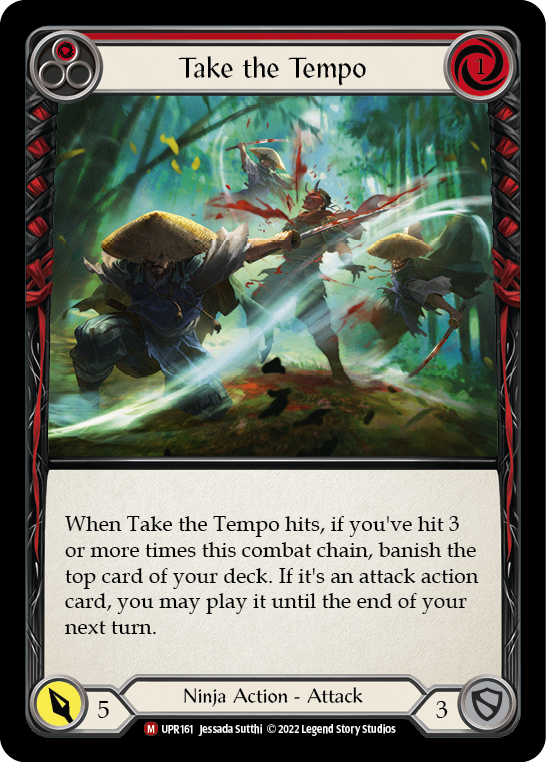
Another subtype to the Aggro Synergy archetype focuses on making the chain as wide as possible to threaten Mask of Momentum triggers and trigger rupture effects. For consistency, this deck relies on the Ninja’s iconic Harmonized Kodachi. A key card in the deck is Double Strike, which generates multiple chain links on its own. Breaking Point and Lava Burst are understated all-stars in this plan. Ending a chain with Snatch, Take the Tempo, or Salt the Wound puts your opponent in a bad position and forces inefficient defense.
Gameplan: Phoenix Flame Fai

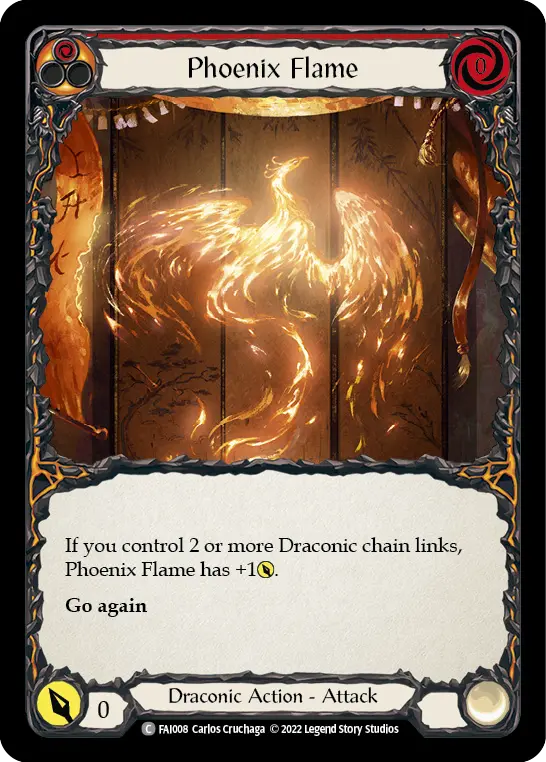
Flamecall Awakening wasn’t mentioned in the previous section because I wanted to discuss it in the context of Phoenix Flame Fai. Flamecall Awakening, Inflame, and Rise from the Ashes are some of the core enablers for this slightly-more-focused archetype of Fai. The deck aims to specifically take advantage of Fai’s Phoenix Flame-related payoffs, Phoenix Form and Rise Up. This is a textbook case of inorganic synergy- cards that LSS explicitly designed to pay off when played together.
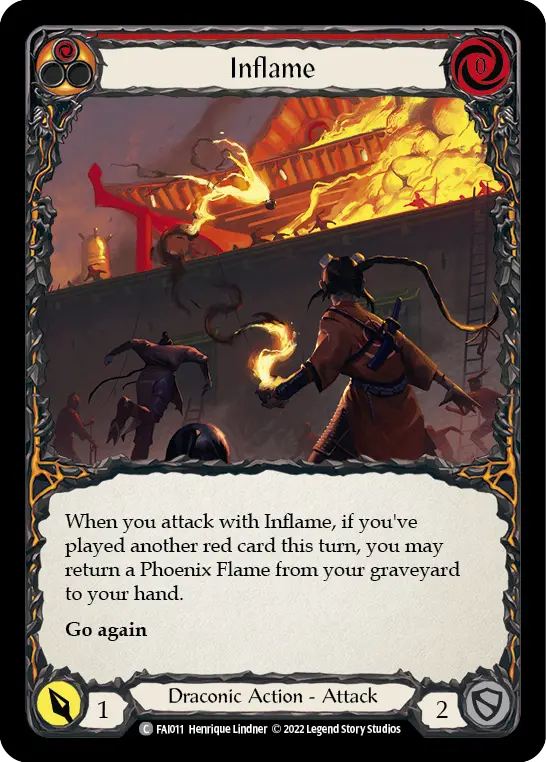
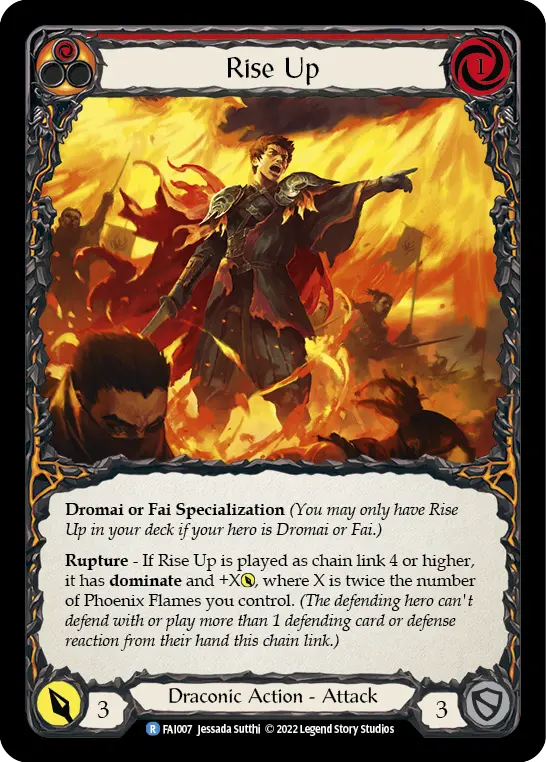

Both of these convert big combat chains of Phoenix Flames into additional damage that is difficult for the opponent to stop, especially when we can combine multiple payoffs in one turn. When Fai forces his opponent to block a Phoenix Form that threatens to draw 3 cards, only to attack with yet another Phoenix Form, the tide of the game truly shifts.

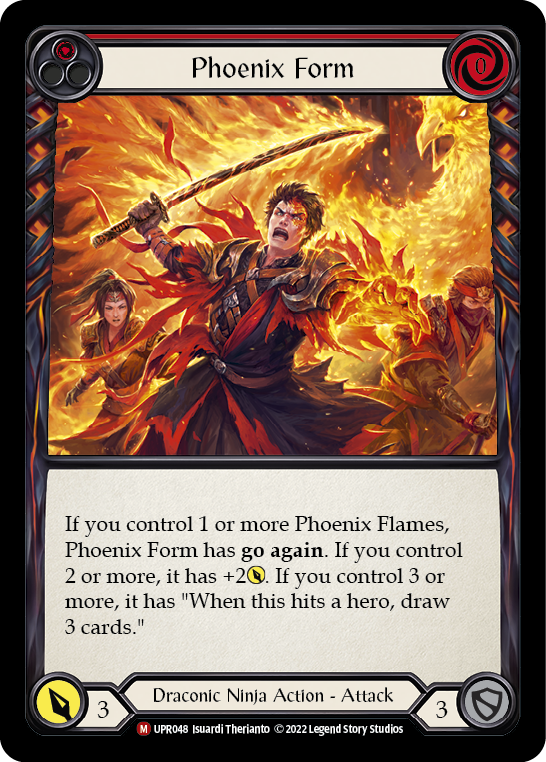
Mask of Momentum is an all around great card for Ninja, but in this archetype, Mask of the Pouncing Lynx is also a viable alternative to help us find our Phoenix Flame in a pinch, or an Inflame to manufacture our big payoff turn.
Gameplan: Combo Fai
Combo Fai- also known as Zoomer Fai in some circles- is interesting as a deck concept, because it also operates quite well as the same aggro synergy decks previously discussed, and may even incorporate some of the Phoenix Flame payoffs. Art of War and Spreading Flames are particularly important in this decklist as well. The key difference is that, in adopting the mantle of combo, Fai attempts to turn his melee attack marathon into a sprint.
While Fai may still be presenting multiple attacks in a turn and forcing the opponent to block Mask of Momentum triggers, he is prioritizing finding one of Art of War or Spreading Flames- or potentially even a Belittle- and withholding it in the arsenal. Following this, any turn that has the potential to get 5+ attacks on the combat chain is a viable combo turn.



Starting with combo all-star Stubby Hammerers and any other buffs that are available, Fai can deal upwards of 40 damage in a turn by attacking with cards such as Inflame, Phoenix Flames, and other standard cards in the suite of the Draconic Ninja’s go again arsenal, all pumped by +1, +2, or more! If one is both greedy and fortunate, they may even get to play a Tome of Firebrand to extend the barrage of attacks.
Another option is to play Mask of Pouncing Lynx to find potentially lethal ‘free’ damage in the form of a Lava Burst or Salt the Wound at the end of the big turn. All in all, this essentially turns the game of Classic Constructed into a game of Blitz, where micro-decisions by either player in the first 2-3 turns can decide the outcome. May the better player win!
Stoking the Fire
When we look at these different archetypes for Fai, it’s important to know there are differences beyond the card selection for any particular decklist. The key is found in how the game plan informs the card selection itself.
Many cards are present across all archetypes simply because they are overall powerful choices, such as Spreading Flames. Some cards are a lot more niche, and have a real opportunity cost with their inclusion. Inflame is an incredibly potent card when we are playing a Combo Fai deck that will benefit from multiple chain links to buff and perhaps some of the Phoenix Flame payoffs; Inflame is an incredibly depressing card to draw in the more standard Aggro Synergy Fai deck, often equating to a 0 for 1 with go again if Fai hasn’t already found a second Phoenix Flame.
When we analyze a game plan, we must consider where the strengths of each plan lie. Perhaps the combo-oriented game plan is most relevant against slower paced decks that allow for a small amount of setup, but are unable to fend off the huge wave of attacks that come all at once. Perhaps the more standard game plan is more well rounded and less volatile into an open meta of other aggro decks. This is the critical skill to develop in our deck building approach. What does our game plan do well, and what are its core weaknesses?
All in all, there are many flavors of Fai to consider in the Uprising metagame, and also a large amount of overlap between the archetypes. There may even be some novel ideas that haven’t been mentioned yet! The best-performing decklists will not only be able to consider their own game plan as we have begun exploring today, but how that game plan interacts with formidable opponents such as Lexi, Oldhim, or Prism. And being able to maintain a powerful game plan, or adjust a vulnerable game plan to the opponent across from you, is crucial for competitive success.




